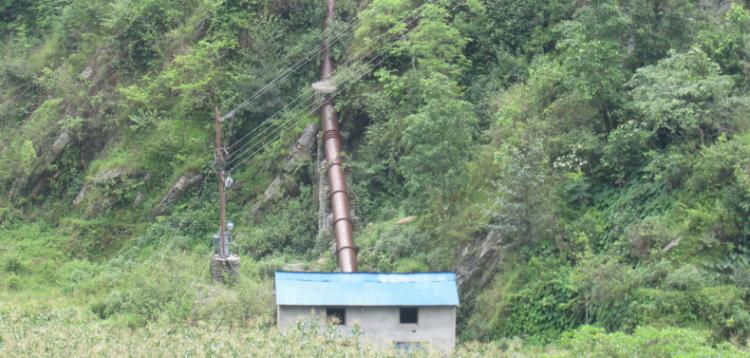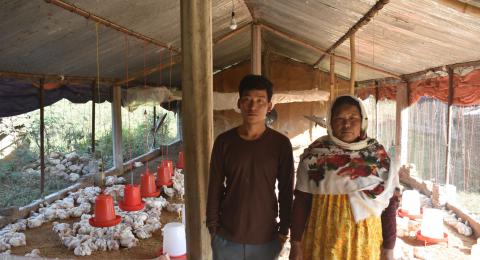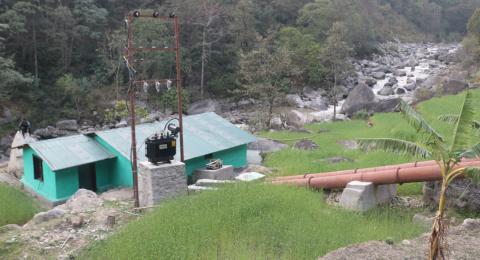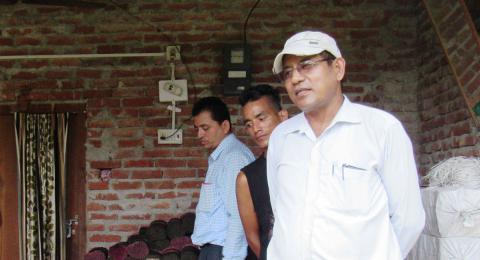
Mr. Purna Bahadur Rai from Jalpa VDC, Khotang district now enjoys electricity generated from the Lumju Khola Micro Hydro Project. He, as father and a farmer, is also the chairman of the user committee managing this plant.
Just three years back, Mr. Purna and other villagers depended on kerosene and firewood for lighting purposes. He had to walk six hours to the nearest city of Diktel to buy kerosene for his home and had to spend NRs. 95 per liter of fuel (EUR 0.85/liter). One liter of kerosene only lasted for about a week. Now he pays around NRs. 100/month (EUR 0.88/month) for the electricity service; saving NRs. 300 (EUR 2.66) a month. “…It was very difficult, especially for women and children because they had to spend long hours in the dark and smoky environment, which had adverse effect to their health… we no longer have to stay in smoky homes, thus stay healthy…” says Mr. Purna. “Also, we use less firewood now and this is helping to save our forest…” he adds, while showing the LED light he installed in his house.
The access to electricity enabled the community to have a Computer Institute at school, so teachers and children use it for developing their learning horizons. “…with the increasing use of mobile phones and television people have gained access to information…as a hidden benefit of electricity utilising these modern facilities villagers are much aware and empowered.” adds Mr. Purna. Women formed Aama Samuha (Mother Groups) and conduct women literary classes and encourage others to engage in income generating as well as social activities.
Currently the site has 195 families benefiting from a strong management committee. The management of the site is based on an adaptation of the tariff collection system managed in NEA. The committee has established proper tariff rates based on fixed based tariff and per unit consumption. With a proper billing system, and a record book of individual households, the management has built trust among the villagers. The tariff collection is done through a local financial cooperative; and to encourage early payers, the community awards households with a pay back on their bill. Villagers are aware of the need of operation and maintenance of their power plant. For this purpose, they created a separate maintenance and repair fund which proved to be very crucial after the damages suffered by April 2015 and May 2015 earthquakes and numerous landslides triggered during the monsoon season. Despite substantial damage to the plant, villagers came together to rehabilitate the plant with their available resources.
This site proves that with a real and strong commitment of local villagers, the MHP development is not only feasible but sustainably successful.





